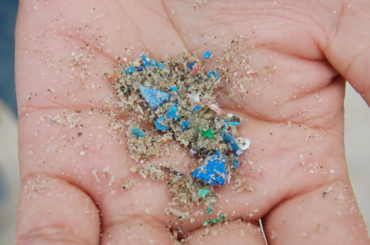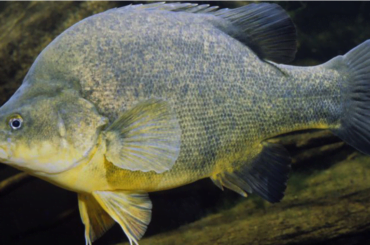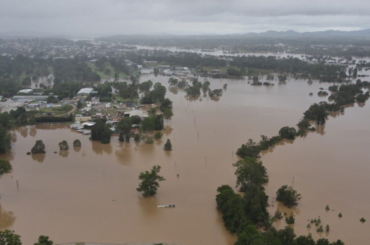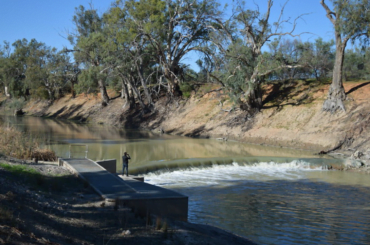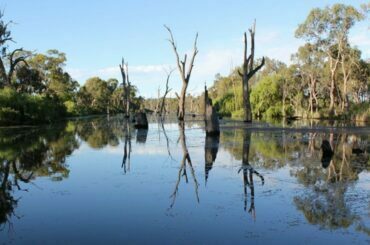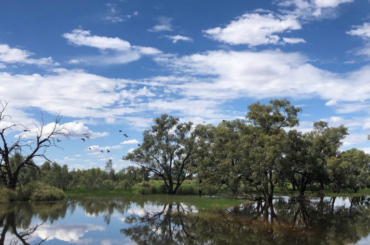‘Flow hydrodynamics’, ‘turbulent kinetic energy’, ‘rheotactic behaviour’ - whilst these terms might not mean much to you, they are essential parts of native fish migration in the Murray-Darling Basin. The Murray-Darling Basin is one of the most regulated river systems in the world, home to over 10,000 barriers preventing fish from migrating. These barriers
Fish Movement Weirs and regulators in rivers and lakes can impede or block the movement of native fish, impacting their ability to migrate and move to suitable feeding or breeding areas. While all fish need to move around to some degree, ‘flow-specialists’ like Golden perch and Silver perch need to move along rivers as part
In response to the fragmentation of rivers and streams, fishways have become a popular method of mitigating the impacts of dams and weirs by helping to; facilitate fish movement and migration and create access to habitats. Habitat fragmentation poses a great risk to biodiversity, with riverine fish species particularly vulnerable to human development. Fishways, also
Microplastics are a global problem, infiltrating all levels of food systems and ecosystems. Now a multi-level governance issue, reaching across international, national and local scales, microplastics are most known for their impact on oceanic ecosystems, however, freshwater ecosystems are equally significantly impacted by plastics. Microplastics have been noticeably less researched in freshwater ecosystems compared to
Like many other important native freshwater fish species within the Murray Darling Basin, Golden perch (Macquaria ambigua) were immensely impacted by the 2018-19 fish kills in the lower Darling River. A 2021 study involving 18 researchers (by Zampatti et.al) looked into the species’ historical and current population demographics in the Darling River. The study provided guidance on how best to manage our
With a wet summer already here and more rain on the horizon, how will water managers and agencies within the Murray-Darling Basin be supporting rivers and fish populations this summer? This article will explore where responsibilities lie between water management agencies in the Murray-Darling Basin, what they will be doing to help native fish and
Australia’s Murray-Darling Basin, like many other catchments and basins globally, naturally fluctuates between periods of drought and periods of flooding, and has followed this pattern for more than 100 million years. Over time, its many native species have learnt and adapted to this pattern, so that the natural fluctuations between ‘boom and bust’ are now
Understanding why, how and when animals move is important for the conservation of different species. In highly modified landscapes, the inclusion of movement ecology can improve the likelihood that conservation and restoration practices promote the resilience of native species. In the case of freshwater fish, they must move regularly within human-modified river systems to feed and spawn,
Australian rivers are highly modified. In 2003, scientists were already recording that 97% of the rivers in New South Wales were significantly modified, placing immense strain on local aquatic and ecological communities to survive without their natural flow regimes. Almost 20 years on, this is still largely the case for rivers across NSW and the
Tucked away in the north-west of New South Wales lies the Toorale National Park and State Conservation Area, a culturally and ecologically significant site. At the confluence of two ecologically significant rivers for the Murray Darling Basin, the Warrego and the Darling Rivers, the Toorale National Park and State Conservation Area were jointly purchased by
The ‘Conservation translocation handbook for New South Wales threatened freshwater fishes’ (April 2021, PDF) has…



